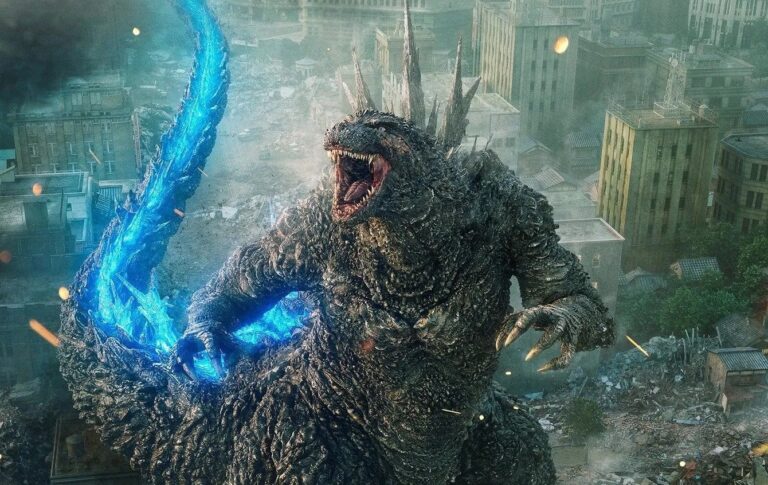From Godzilla to K-pop demons: Why cinematic monsters are having a moment
UBC’s Dr. Ji-yoon An on why cinematic monsters are having a moment and her new course that explores what they reveal about us.

A promotional image from Godzilla Minus One (2023). Credit: Toho
From Godzilla Minus One and Sinners to KPop Demon Hunters and Frankenstein, monsters are everywhere right now. Whether it’s vampires or singing demons, audiences can’t seem to get enough.
We spoke with Dr. Ji-yoon An, assistant professor in UBC’s department of Asian studies, about what draws us to creatures meant to terrify and the new course she’s teaching next semester titled “Cinematic Monsters of Asia.”
What’s the idea behind this course?
The course was born out of my personal love of monsters—especially the sympathetic kind. I’ve always believed that the best monster stories aren’t just about fear, but about understanding. We’ll begin by exploring key film theories like the uncanny, the abject and the monstrous feminine, then dive into classic monster tropes, like vampires and zombies, but examine them in contemporary films from Korea, Japan, Thailand and beyond.
Ultimately, I want students to ask: If monsters are social constructs that reveal what makes us uncomfortable, what are the monsters of our society today and how have they changed over time?
Why do monster stories resonate so much right now?
It’s fascinating how monsters have become the protagonists. Think of King Kong or Godzilla—early versions focused on how humans reacted to the creature. Now, we follow the monster’s emotional journey. Monsters often represent “the other”—something marginalized or not accepted by society—and today’s films seem more interested in understanding that perspective. Maybe that’s because so many of us feel like outsiders in a divided world.
There’s also a strong element of escapism. Monsters transport us into fantastical worlds, and these stories tend to thrive during times of economic or social uncertainty. They give us a way to safely explore our boundaries—of fear, empathy and belonging.
Some films even blur those boundaries, turning what once seemed monstrous into something sympathetic. Historically, “monsters” have reflected prejudice—depicting difference as dangerous. Many of these myths were rooted in misunderstanding, whether through travelers’ tales or misinterpreted medical conditions.
The concept of the abject is useful here—it refers to something familiar but rejected, like the thin film on heated milk that many people find repulsive. Monsters work the same way: they disturb us because they reflect parts of ourselves that we’ve pushed away.
For me, the most powerful horror films challenge those rigid categories. They don’t just scare us—they expand our empathy and self-awareness.
How do Asian monsters differ from those in Western horror?
Asian monsters are often drawn from local folklore and mythology, while Western ones tend to come from Gothic or biblical traditions. What really interests me is how global monster tropes—like zombies—are being localized in Asian cinema.
In Korea, for example, zombies aren’t traditional, but films like Train to Busan reimagine them through the lens of historical trauma. The result is a narrative that’s both familiar and deeply rooted in local context, with layers of meaning around class, governance and collective memory.
What are some of the films you’ll be exploring in class?
We’ll start with classics like the original 1954 Godzilla, which reads very differently when you understand the context of nuclear testing and postwar trauma. We’ll also revisit The Ring, which helped define modern Japanese horror.
More recent films include Exhuma, a gripping Korean horror film that introduces a completely new kind of monster rooted in shamanism. It explores the legacy of colonization through a uniquely local lens. I’m also including Pulgasari, a campy North Korean monster film that’s surprisingly rich in subversive political messaging.
If you could invent a new monster that reflects today’s fears, what would it look like?
I think today’s monster would be internal—something within us, not an external threat. Maybe it wouldn’t even look like a monster. The real horror now often comes from social division, from the ways we treat each other. A contemporary monster might appear completely human but reflect the darker parts of our own nature.



